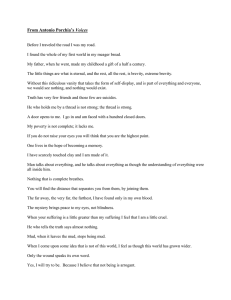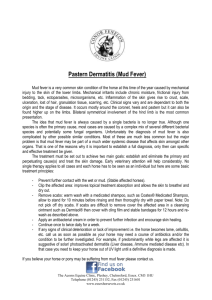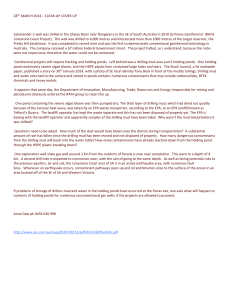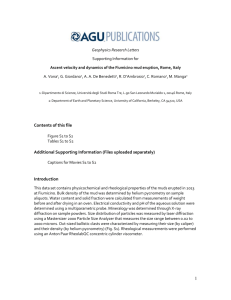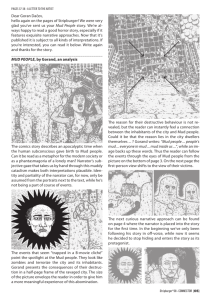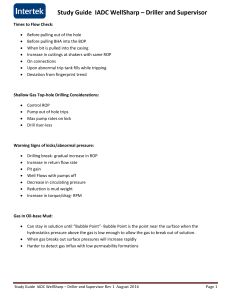6.1 PORE PRESSURE EVALUATION
advertisement
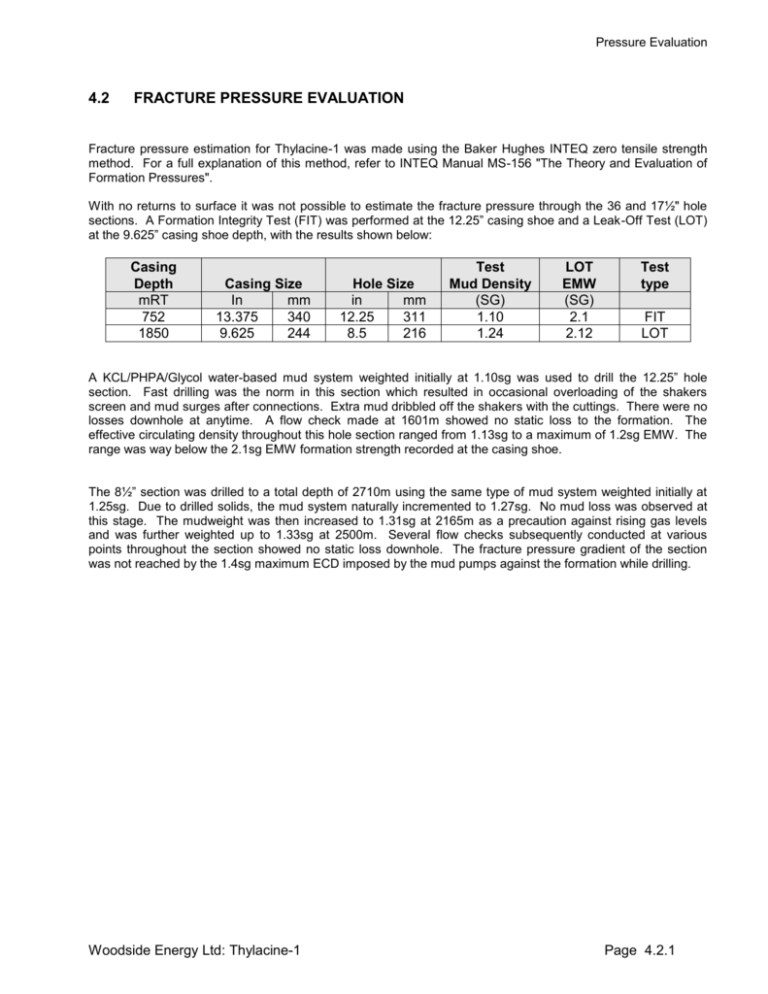
Pressure Evaluation 4.2 FRACTURE PRESSURE EVALUATION Fracture pressure estimation for Thylacine-1 was made using the Baker Hughes INTEQ zero tensile strength method. For a full explanation of this method, refer to INTEQ Manual MS-156 "The Theory and Evaluation of Formation Pressures". With no returns to surface it was not possible to estimate the fracture pressure through the 36 and 17½" hole sections. A Formation Integrity Test (FIT) was performed at the 12.25” casing shoe and a Leak-Off Test (LOT) at the 9.625” casing shoe depth, with the results shown below: Casing Depth mRT 752 1850 Casing Size In mm 13.375 340 9.625 244 Hole Size in mm 12.25 311 8.5 216 Test Mud Density (SG) 1.10 1.24 LOT EMW (SG) 2.1 2.12 Test type FIT LOT A KCL/PHPA/Glycol water-based mud system weighted initially at 1.10sg was used to drill the 12.25” hole section. Fast drilling was the norm in this section which resulted in occasional overloading of the shakers screen and mud surges after connections. Extra mud dribbled off the shakers with the cuttings. There were no losses downhole at anytime. A flow check made at 1601m showed no static loss to the formation. The effective circulating density throughout this hole section ranged from 1.13sg to a maximum of 1.2sg EMW. The range was way below the 2.1sg EMW formation strength recorded at the casing shoe. The 8½” section was drilled to a total depth of 2710m using the same type of mud system weighted initially at 1.25sg. Due to drilled solids, the mud system naturally incremented to 1.27sg. No mud loss was observed at this stage. The mudweight was then increased to 1.31sg at 2165m as a precaution against rising gas levels and was further weighted up to 1.33sg at 2500m. Several flow checks subsequently conducted at various points throughout the section showed no static loss downhole. The fracture pressure gradient of the section was not reached by the 1.4sg maximum ECD imposed by the mud pumps against the formation while drilling. Woodside Energy Ltd: Thylacine-1 Page 4.2.1

